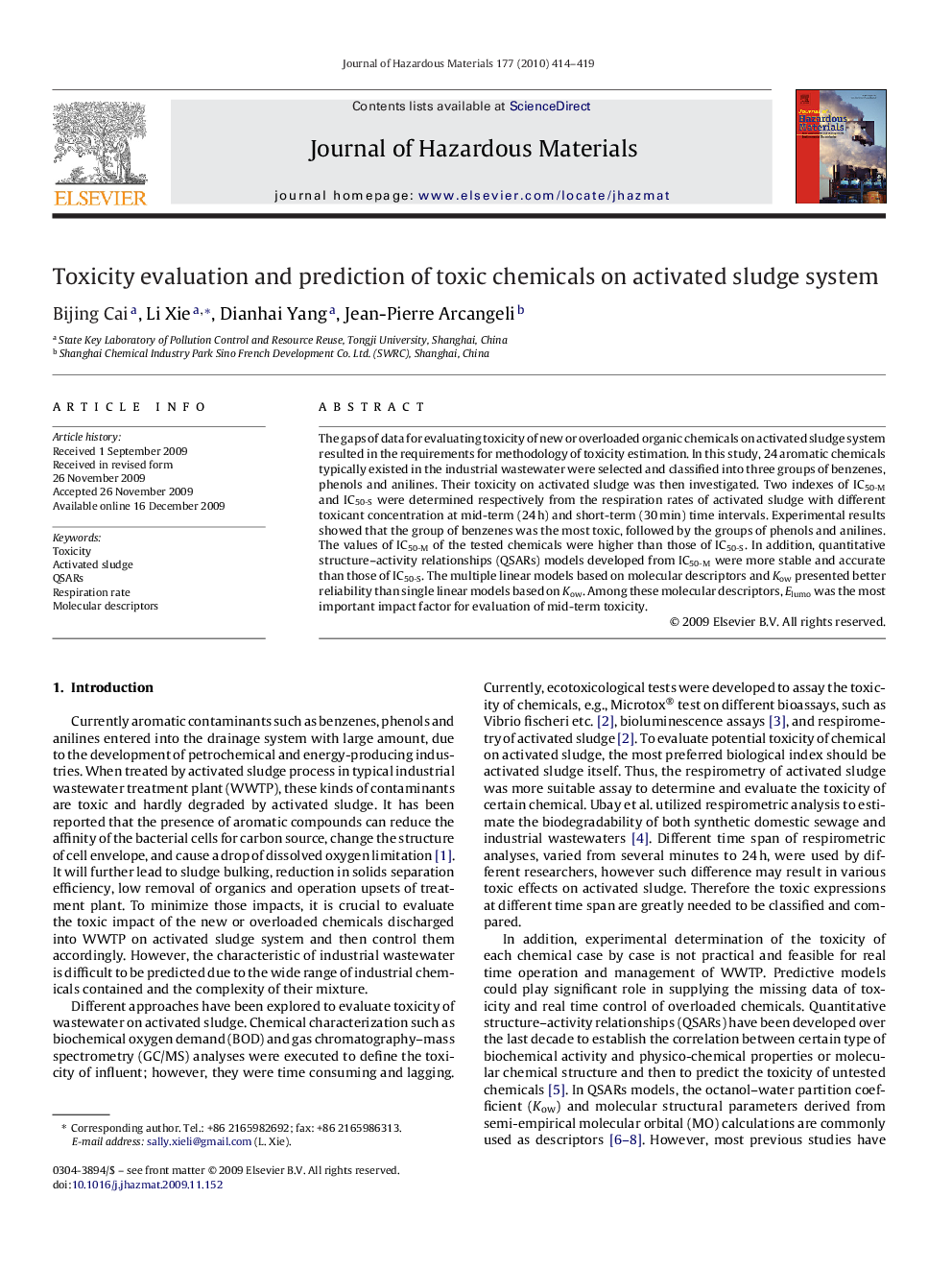| Article ID | Journal | Published Year | Pages | File Type |
|---|---|---|---|---|
| 580878 | Journal of Hazardous Materials | 2010 | 6 Pages |
Abstract
The gaps of data for evaluating toxicity of new or overloaded organic chemicals on activated sludge system resulted in the requirements for methodology of toxicity estimation. In this study, 24 aromatic chemicals typically existed in the industrial wastewater were selected and classified into three groups of benzenes, phenols and anilines. Their toxicity on activated sludge was then investigated. Two indexes of IC50-M and IC50-S were determined respectively from the respiration rates of activated sludge with different toxicant concentration at mid-term (24Â h) and short-term (30Â min) time intervals. Experimental results showed that the group of benzenes was the most toxic, followed by the groups of phenols and anilines. The values of IC50-M of the tested chemicals were higher than those of IC50-S. In addition, quantitative structure-activity relationships (QSARs) models developed from IC50-M were more stable and accurate than those of IC50-S. The multiple linear models based on molecular descriptors and Kow presented better reliability than single linear models based on Kow. Among these molecular descriptors, Elumo was the most important impact factor for evaluation of mid-term toxicity.
Related Topics
Physical Sciences and Engineering
Chemical Engineering
Chemical Health and Safety
Authors
Bijing Cai, Li Xie, Dianhai Yang, Jean-Pierre Arcangeli,
